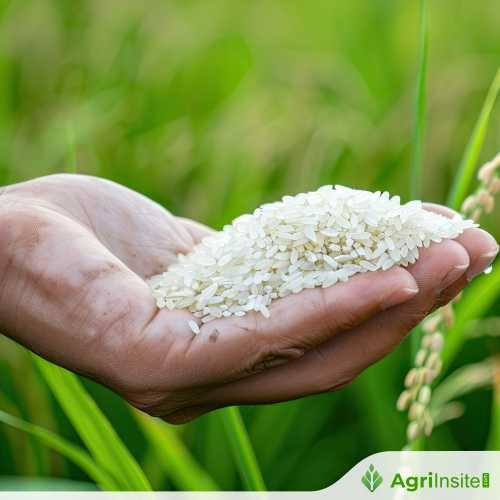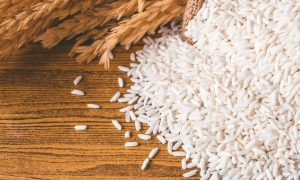Bangladesh : Hope grows with a new aromatic rice variety

Bangladesh’s aromatic rice sector is transforming with the approval of ACI dhan2, the first high-yielding, small-grain aromatic variety for the Boro season. This breakthrough doubles yields compared to traditional varieties, offers strong pest resistance, and maintains premium quality. It boosts farmer profitability, ensures year-round aromatic rice cultivation, and expands export potential.
Kalijira, chinigura, kataribhog. These are among the local aromatic rice varieties that rule the special menus at Bangladeshi homes, ceremonies and high-end eateries. But most of these indigenous varieties are often low-yielding, thus high-priced and commercially less viable.
As market demand rises both locally and globally, there has been a race for high-yielding varieties in this coveted market of aromatic rice, keeping its distinctive fragrance and delicacy.
Though the government’s research institutes are the frontrunners, corporates, who entered the packaged rice market with their own brand names, have advanced the initiative over the years. The result is amazing. Aromatic rice production has almost doubled every five years.
Farmers are gaining from higher returns, and the market is expanding. More improved and diversified varieties of aromatic rice are being added to their choice.
Now they have one for Boro season for the first time. Until now, small grain aromatic rice, which is in high demand in Bangladesh, has only grown during the Aman crop season.
The National Seed Board has approved an aromatic small-grain rice variety for cultivation during the Boro season. The approval came during the 114th meeting of the Board. Among the key approvals was ACI dhan2, an inbred rice variety developed by ACI, which combines the rare traits of high yield, aromatic quality, and strong agronomic performance. Experts expect this to mark a significant breakthrough in Bangladesh’s rice research and seed development landscape.
High yield, low farming cost
According to the meeting minutes, ACI dhan2 stands out for its yield potential of up to 7 tonnes per hectare, a substantial leap from the traditionally grown aromatic variety BRRI dhan34, which yields around 3.5 tonnes per hectare. This more than 100% increase in yield positions ACI dhan2 as a transformative option for farmers aiming to meet the growing demand for aromatic rice.
The variety matures in 135 to 140 days, with plant heights ranging between 100–110 cm. It features an erect plant type, non-shattering grains, and photo-insensitivity, which together make it resilient and easy to harvest. Each panicle carries 300 to 350 grains, with a 1000-grain weight of 13.4 grams, indicating healthy grain development and good density.
According to the rice researchers, ACI dhan2 also shows reduced susceptibility to major pests and diseases, helping farmers cut down on pesticide use. This not only reduces production costs but also supports safer, more sustainable agricultural practices.
Upon ripening, the rice grains turn a straw colour, retaining their structure well after harvest. Once cooked, the rice offers a fragrant aroma, non-sticky texture, and pleasant taste, aligning with consumer preferences for high-quality aromatic rice.
“This variety directly responds to the long-standing demand among farmers for an aromatic rice option in the Boro season, and it opens up exciting export opportunities for Bangladesh,” said the lead researcher, Mizanur Rahaman Mohammad, who holds an MS in Genetics & Plant Breeding and is the Director of R&D and Operations at ACI.
He said, “For the first time in Bangladesh, a fragrant rice variety has been approved for the Boro season. Earlier, there were two varieties for the Aman season. However, the productivity of this newly developed variety is higher than that of the Aman varieties.”
The combination of high yield, premium grain quality, and aromatic appeal makes ACI dhan2 a strong candidate for both domestic consumption and international markets, where demand for speciality rice varieties is steadily rising.
The official release of ACI dhan2 signals a new chapter for Boro season cultivation — one that promises to enhance farmer profitability and elevate Bangladesh’s position in the global aromatic rice market.
At the 114th meeting of the National Seed Board, five new rice varieties and one wheat variety were released. Three rice varieties by BRRI, two rice varieties by ACI and one wheat variety by Gazipur Agricultural University.
FH Ansarey, president of ACI Agribusinesses Division, said, ACI dhan2, being Bangladesh’s first aromatic small-grain Boro variety, breaks new ground by doubling the yield potential of traditional Aman fragrant rice. It opens up high-value markets and export opportunities for farmers who were previously constrained to low-yielding varieties in this segment.
“Its excellent agronomic traits, reduced input requirement, and superior grain quality will redefine aromatic rice cultivation during the Boro season. We believe these innovations will significantly contribute to Bangladesh’s rice self-sufficiency, farmer income enhancement, and the potential for value-added rice export markets,” he said.
The Ministry of Agriculture data shows, a total of 10.23 lakh tonnes of aromatic rice (both long grain and small grain combined) was produced in the 2023–24 fiscal year, up from 5.79 lakh tonnes in 2017–18. Among aromatic varieties, small grain types are more widely cultivated by farmers, as they are mostly used for making polao.
Race for improved varieties
Like basmati of India and Pakistan, or jasmine of Thailand, kataribhog of Bangladesh is a long-grain aromatic rice mostly consumed in biriyani at high-end restaurants or wedding receptions. But small grain varieties are in higher demand and are cultivated only during the Aman season in Bangladesh, according to stakeholders.
These include varieties such as BRRI dhan34, Kalijeera, Chinigura, Chini Atap, Chini Kanai, Badshabhog, Kataribhog, Madanbhog, Radhunipagal, Banshphul, Jatabanshphul, Binnaphul, Tulsimala, Tulsi Atap, Tulsi Mani, Madhumala, Khorma, Sakkur Khorma, Nunia, Pashushail, Dulabhog, Dudhsail, Tepiboro, Rasulbhog, Krishnabhog, among others. Of these, only BRRI dhan34 is a government-approved variety, while the rest are local varieties.
According to rice scientists, BRRI dhan34 is the most widely cultivated among the small grain types. It is photo-sensitive and has an average yield of 3.5 tonnes per hectare, while most of the local varieties yield around 1.5-2 tonnes per hectare.
Local varieties can yield 187-299 kilograms per bigha, while the high-yielding ones produce 448-821 kilograms.
State-owned Bangladesh Rice Research Institute (BRRI) has developed about 10 high-yielding fine and aromatic rice varieties such as BR5 (Dulabhog), BRRI-dhan34, BRRI-dhan37, BRRI-dhan38, BRRI-dhan70, BRRI-dhan75, BRRI-dhan80 and BRRI-dhan50.
Of these, BRRI-34, a small grain almost similar to the chinigura variety, is cultivated the most, yielding double the local variety.
BRRI-70 is a long-grain variety identical to the famous kataribhog variety. Its yield is 634.4kg per bigha, nearly double the local variety, rice scientists said.
BRRI-80, which is similar to Thailand’s jasmine, gives 672kg per bigha.
More than 500 varieties of small-grain aromatic rice are currently preserved in the BRRI.
The newly developed ACI dhan2 project was led by Mizanur Rahaman Mohammad, the director of R&D and Operations at ACI. He said the yield of the newly approved ACI dhan2 is nearly double that of BRRI dhan34. The crop duration is nearly the same. Unlike BRRI dhan34, ACI dhan2 is not photo-sensitive, and it can be cultivated in the Boro season like other high-yielding Boro varieties. It requires no extra fertiliser or pesticide, and the production cost remains the same.
Small-grain aromatic rice is sold both by various companies and in the open market. Currently, branded rice is sold at Tk130–150 per kg, while in the open market it sells for Tk90–110 per kg.
Mizanur Rahaman said that since this new variety is suitable for the Boro season, it is expected to gain popularity among farmers. It has high productivity similar to other high-yielding varieties, but its market price is significantly higher, making it a profitable crop for farmers.
Khondaker Mohammad Iftekharuddaula, chief scientist, Plant Breeding Division, BRRI, said, “There is a commercial demand for small grain aromatic rice. BRRI has released several varieties for both Aman and Boro seasons, but most of them are long-grain types. For the first time in the Boro season, a small grain aromatic rice variety — ACI dhan2 — has been approved. This is certainly a step forward.”
Export potentials
As per data from the Export Promotion Bureau (EPB), export earnings from aromatic rice amounted to $2.88 million in the 2019-20 fiscal year, $2.06 million in 2020-21. In the 2021-22 fiscal year, $1.07 million worth of aromatic rice was exported, but exports were halted in the following 2022-23 fiscal year amid a ban. In the 2023-24 fiscal year, exports amounted to just $0.06 million.
No aromatic rice was imported by Bangladesh in the fiscal years 2023-24 and 2024-25, according to a document of the food ministry. However, imports totalled 2.61 tonnes in the 2022-23 fiscal year, 37.76 tonnes in the 2021-22 fiscal year, and 54.14 tonnes in the 2020-21 fiscal year, the document showed.
A ResearchGate article says the international trade of Bangladeshi aromatic rice is growing, with premium prices expected from Europe and the USA if properly branded and marketed.
For its long, slender grain with soft and slightly sticky quality, BR-26 rice can create demand in East Asian countries such as Japan and Korea.
To Read more about Rice News continue reading Agriinsite.com
Source : The Business Standard














